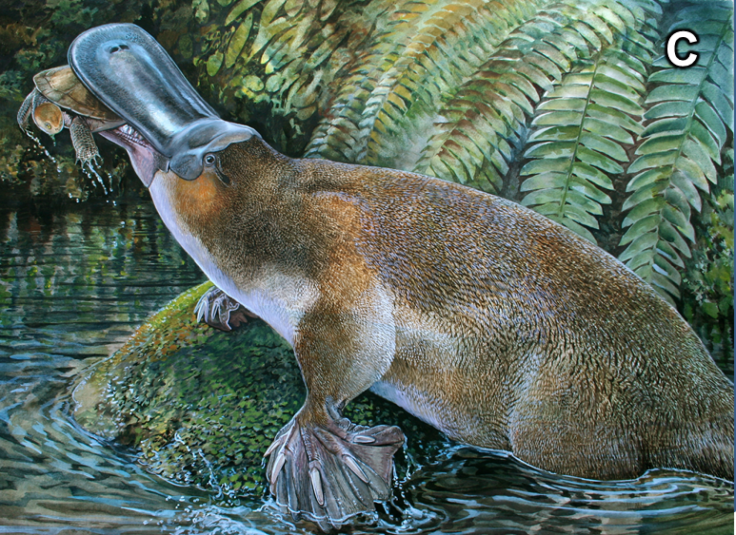Ancient Platypus Tooth ID'd As Extinct, Newly Discovered Species

The platypus seems like it was assembled by nature after a late night out, using a box of leftover parts. It belongs to the monotremes, an odd little family of egg-laying mammals that includes just one other family, the echidnas.
Now, in a forthcoming paper in the Journal of Vertebrate Paleontology, researchers describe a previously unknown species of extinct platypus that lived somewhere between 5 million and 15 million years ago. The new platypus species, dubbed Obdurodon tharalkooschild, exists in the fossil record only as a single tooth – for now.
The tooth came from a block of limestone extracted from northwest Queensland, in Australia. It was dug up sometime in the past five to 10 years but wasn’t uncovered until around 2009.
“Because [limestone] is a really hard substrate, we can’t get the fossils out in the field,” lead author Rebecca Pian, a researcher at Columbia University and the American Museum of Natural History, said in a phone interview. To process the limestone, the researchers have to dip it in acid that dissolves the rock but leaves the fossil behind.
“Sometimes we’re lucky and and we know what fossils are in there, but more often they’re just inside the block,” Pian says.
At first, the scientists who uncovered the tooth thought that it belonged to an already-described ancient platypus species called Obdurodon dicksoni. Pian stumbled across the fossil in 2012 when she was working on another project, and was struck by how much larger this particular tooth was than the others around it. When she looked at it under a microscope, other minute features pointed to the tooth’s owner belonging to some new species.
Obdurodon tharalkooschild is probably a side branch on the monotreme family tree – not a direct ancestor of our modern platypuses (yes, platypuses, not platypi -- Pian estimates the question of how to pluralize platypus is the most common query she gets as a monotreme researcher). Based on the size of its tooth, Pian and her colleagues estimate the ancient platypus would have been about three feet long. Because the tooth is quite well-developed, the scientists think O. tharalkooschild likely ate freshwater crustaceans, as well as frogs, fish and small turtles.
The two words that make up the new platypus’ name have very different origins: one is rooted in anatomy, the other in myth. The genus name “obdurodon” means “lasting tooth,” referring to the fact that it still has teeth, whereas modern platypuses have only horny pads in their mouths.
The species name “tharalkooschild” refers to an Aboriginal legend about the origin of the platypus. The story, as the researchers tell it, involves a girl duck named Tharalkoo who lived during the Dreamtime, or creation period. Tharalkoo disobeyed her parents’ warnings about swimming downriver, and was caught and raped (some versions have it as wooed) by the water-rat Bigoon. Tharalkoo eventually returned to her family and laid an egg along with the other girl ducks. But Tharalkoo’s egg hatched into a strange beast that had her webbed feet and bill, but Bigoon’s fur and front paws: the original platypus.
© Copyright IBTimes 2025. All rights reserved.





















